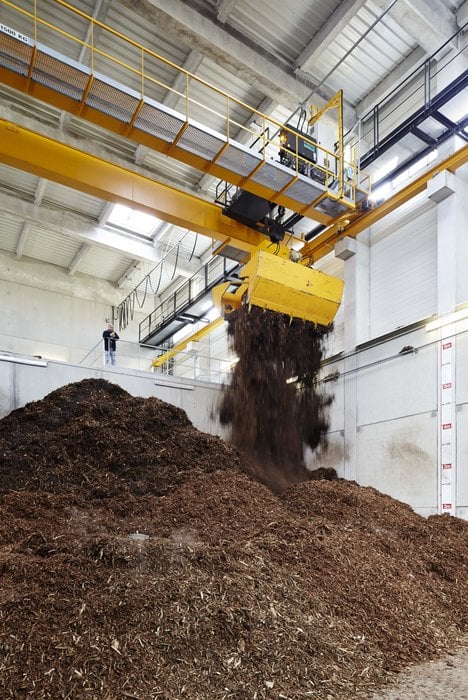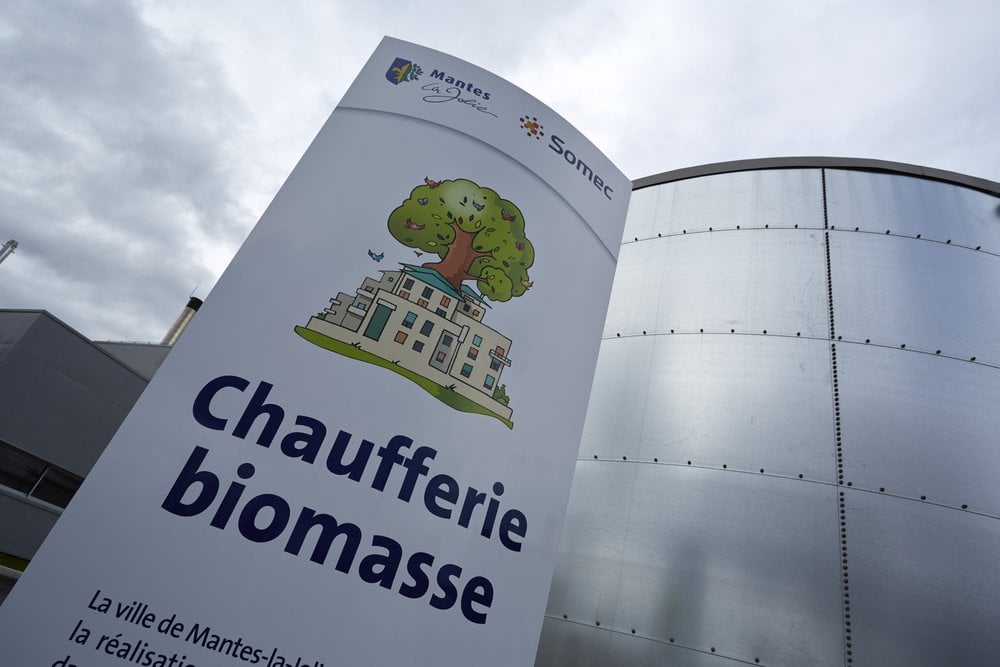www.magazine-industry-usa.com
19
'14
Written on Modified on
Somec, on behalf of Dalkia, its parent company, manages the district heating system and the distribution of domestic hot water (DHW) in the Val Fourré neighbourhood at Mantes la Jolie in the French administrative department of Yvelines. The new biomass he
Dalkia operates district heating installations most of which run on gas, recovered energy by-products, heavy fuel (sometimes combined heat and power systems [CHP]) enabling the resale of electricity to electricity distributors. The company decided to build a new heating system at Mantes la Jolie using biomass as fuel. Biomass is untreated wood that is chemical-free (no painted or varnished wood) and shredded and calibrated for size and moisture content. This fuel source is derived from shredded wooden pallets, lopped off branches in the town environment and green waste and branches from neighbouring forests. This material, unusable for the wood transformation industry, is collected within a radius of 80 km around the Val Fourré heating facility.

The Belgian firm Vyncke, whose specialty is the construction of biomass heating systems, won the bid to set up two x 8 MW biomass boilers in this new heating facility together with all equipment required to run them. This heating system now has the annual capacity of supplying 70 % of the energy required for the heating and supply of domestic hot water (DHW) for 5500 Val Fourré housing units and surrounding public utilities such as the lycée (high school), collège (lower secondary school), the sports centre, administrative buildings and the François Quesnay district hospital. So, can we say that the existing gas fired boiler is being down-graded from the main source of energy to a top-up role? Well, what we can definitely say is that the carbon footprint of the unit as a whole has significantly improved.

A fully automated suspended crane with Verlinde lifting components
The new biomass heating facility that runs continuously (24/24 7/7) is supervised round the clock by two operators. Automation has to be at a maximum level and especially the uninterrupted supply of material to the boilers. The basic principle of a gas system is to open or close a valve. With biomass, on the other hand, different operating modes are required and especially with respect to storage and the feeding of boilers. Three fuel pits are filled during the day by a constant stream of trucks. Each boiler has its specific pit. Fitted with scraper floors, the pits provide a constant supply of fuel. The third pit is used as an intermediary storage space for the boilers' night time supply of fuel and, if required, during the day or continuously over a three day period. The 6.3 metric ton suspended crane (class 5M ) fitted with Verlinde components and fully automated plays a vital role in the management of the shredded wood storage area and for the continuous supply of fuel to the boilers.

The storage space is fully laid out in a grid pattern
In order to automate the main storage area as much as possible, it is laid out in a virtual grid pattern of thirty identically dimensioned squares. The suspended crane with its Verlinde components is fitted with a 3.5 metric ton grab, has a capacity of 5 m3 for a maximum load of 1.5 metric tons and is equipped with an on-board controller on the trolley. The controller, which also manages the grab's hydraulic system and the overload or anti-skew safety devices, has a permanent secure Wifi link with the installation's other controller, a Siemens brand Simatic. The latter memorizes the area's grid layout to enable it to organize the smooth and regular unloading of the fuel. In this way, thanks to the position sensor linked to the grab, the system knows the height of the matter deposited in each square. As and when the trucks loaded with shredded wood arrive, the suspended crane transfers the material from the truck offload area to the storage space and is instructed to release the load in the square best suited to take it.

Long travel of the suspended crane is 30 m, cross travel 16 m at a maximum height of 13 m and is fully secure thanks to the use of at least a hundred sensors, absolute encoders and roller limit switches. For even greater safety, all devices are duplicated and the whole on-board intelligence of the suspended crane is accessible to operators. An indispensable tool for operating the heating plant, the suspended crane is geared to a productivity rate of 140 m3/h of handled material. To meet the above specification conditions, the lifting speed is 20 m/min and the horizontal travel speed 63 m/min. The variable speed option for up/down and long travel has been selected because it prevents current spikes while enabling smooth starts and restricts load oscillation during transfer operations. Likewise, the wireless control feature was adopted to simplify manual operations.

Compliance with the specification sheet and with time limits, reliability of the equipment and availability of teams are for Jérôme Béarelle, manager of the project at Vyncke, decisive aspects that led to their selection of Verlinde for this project and for which automation is a decisive productivity factor for the running of the biomass boilers.


